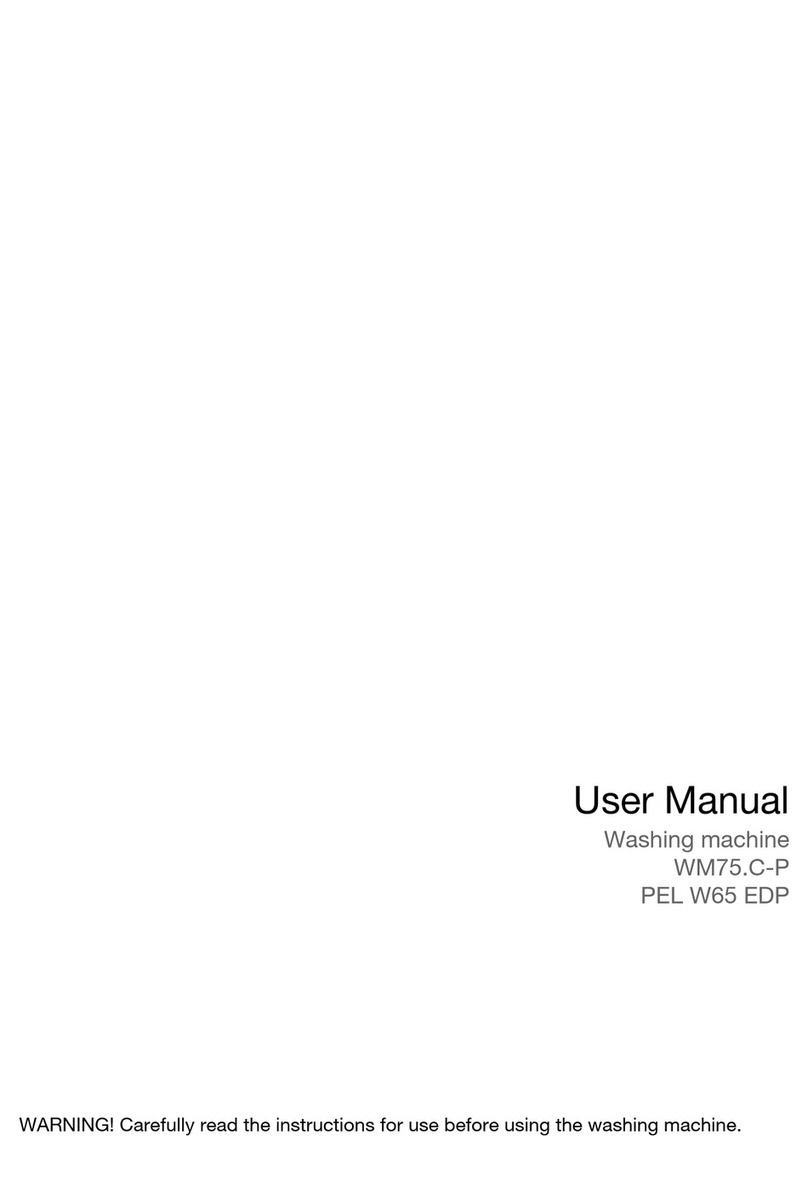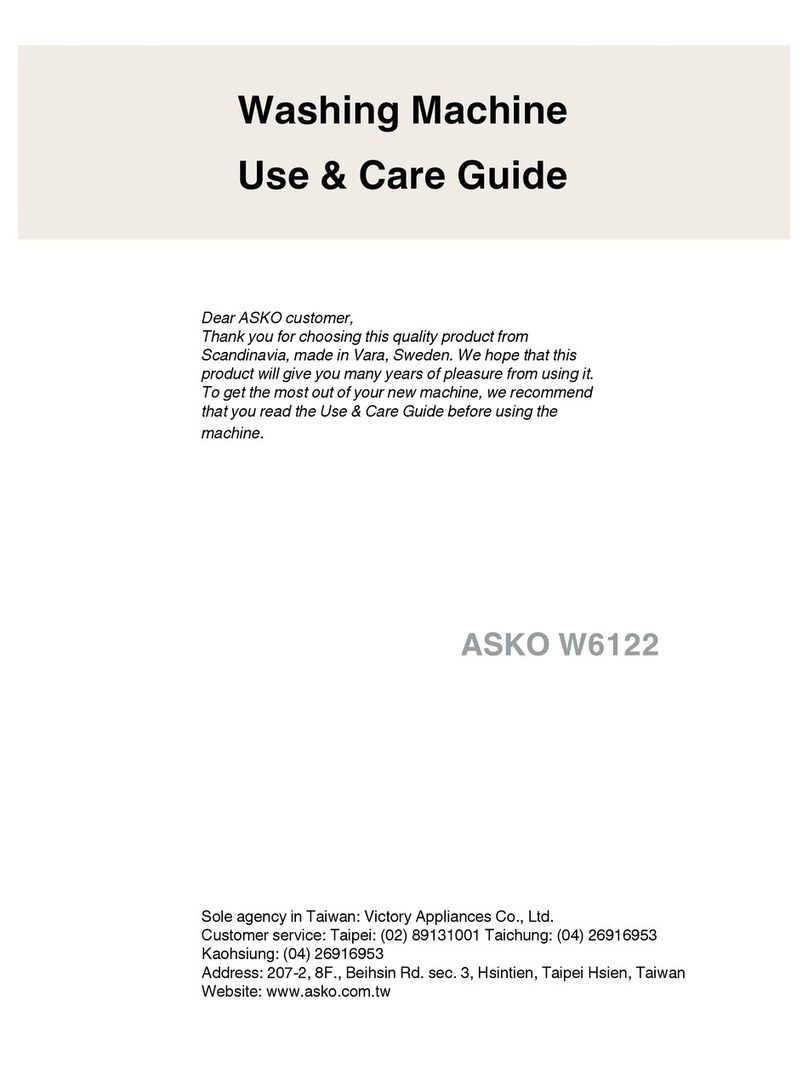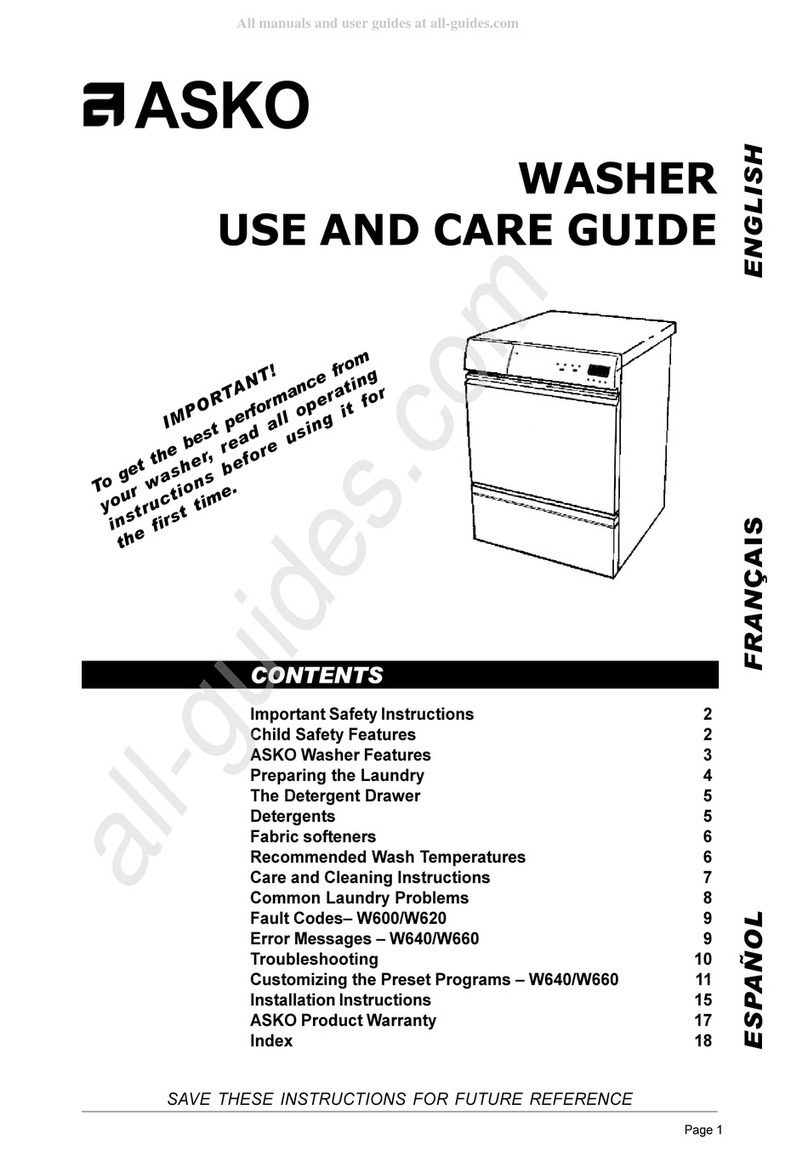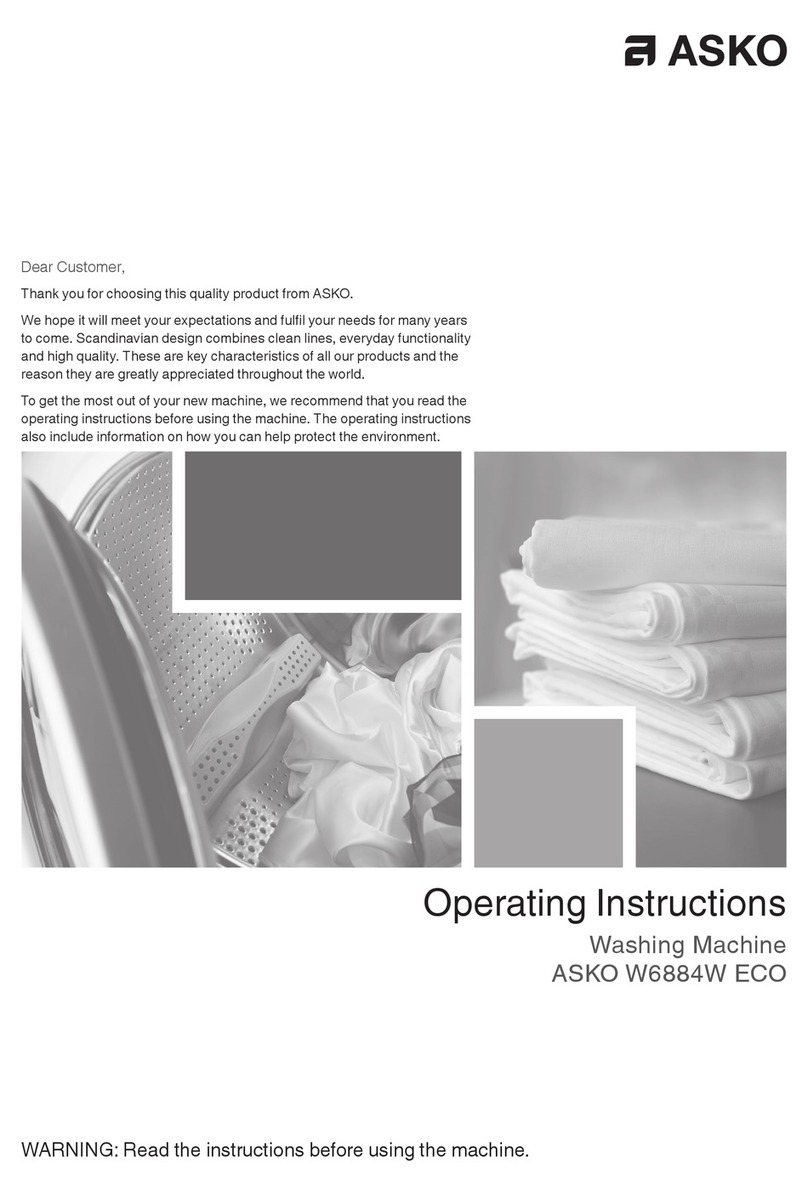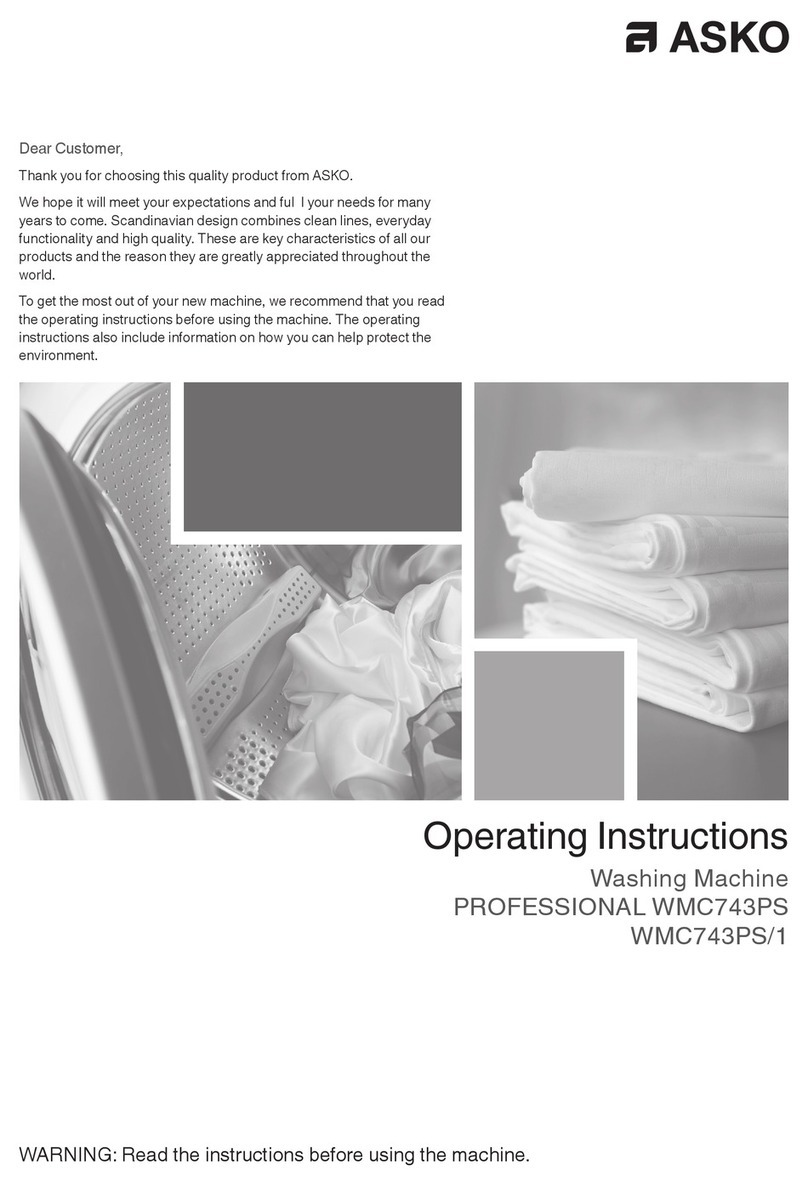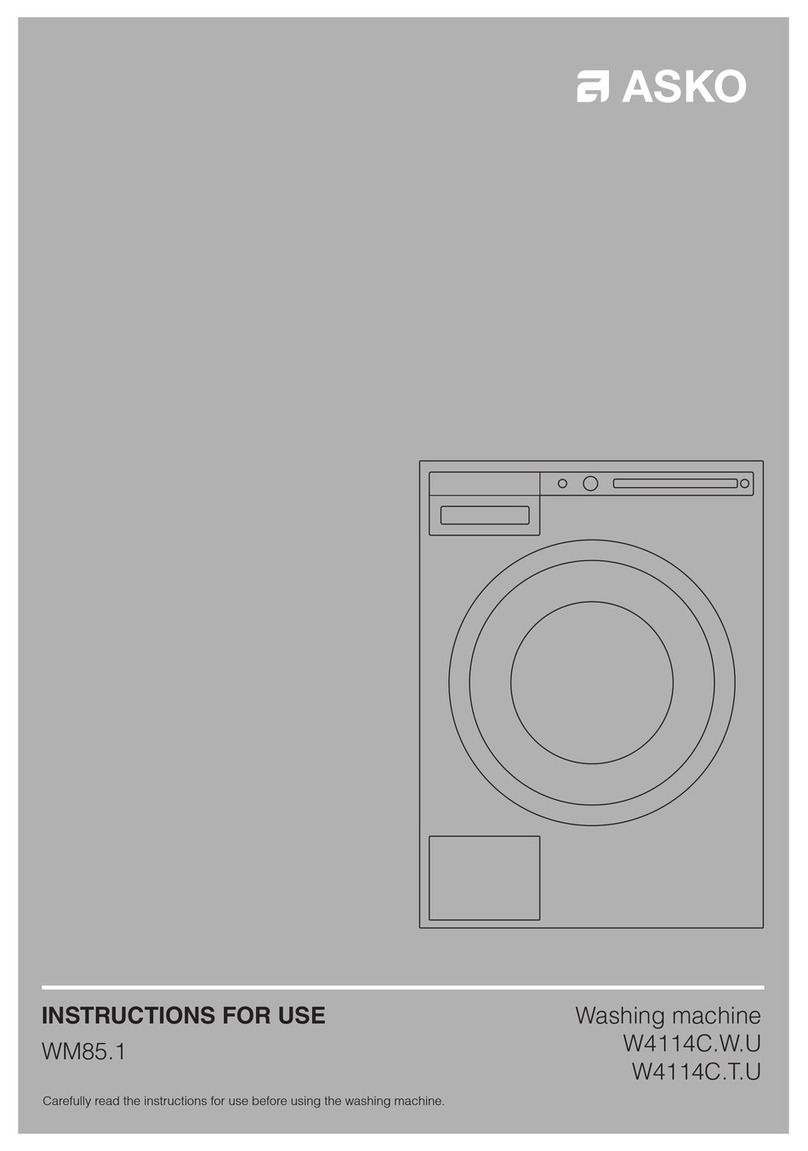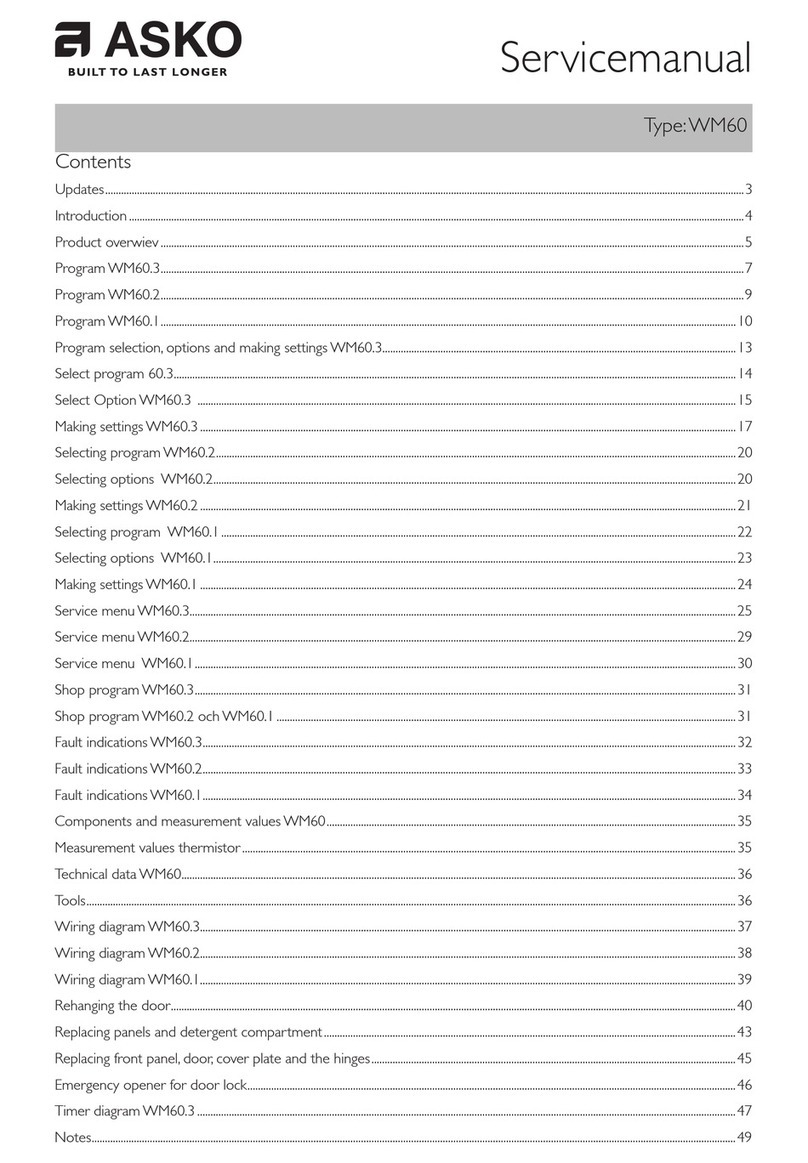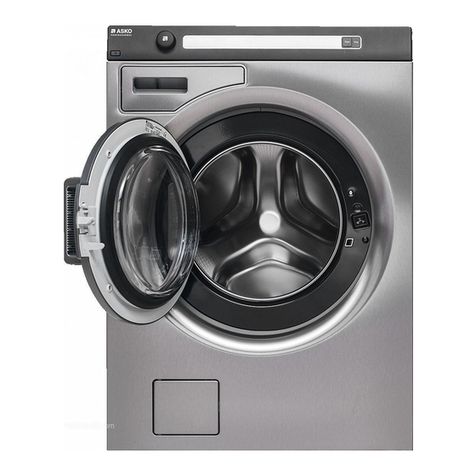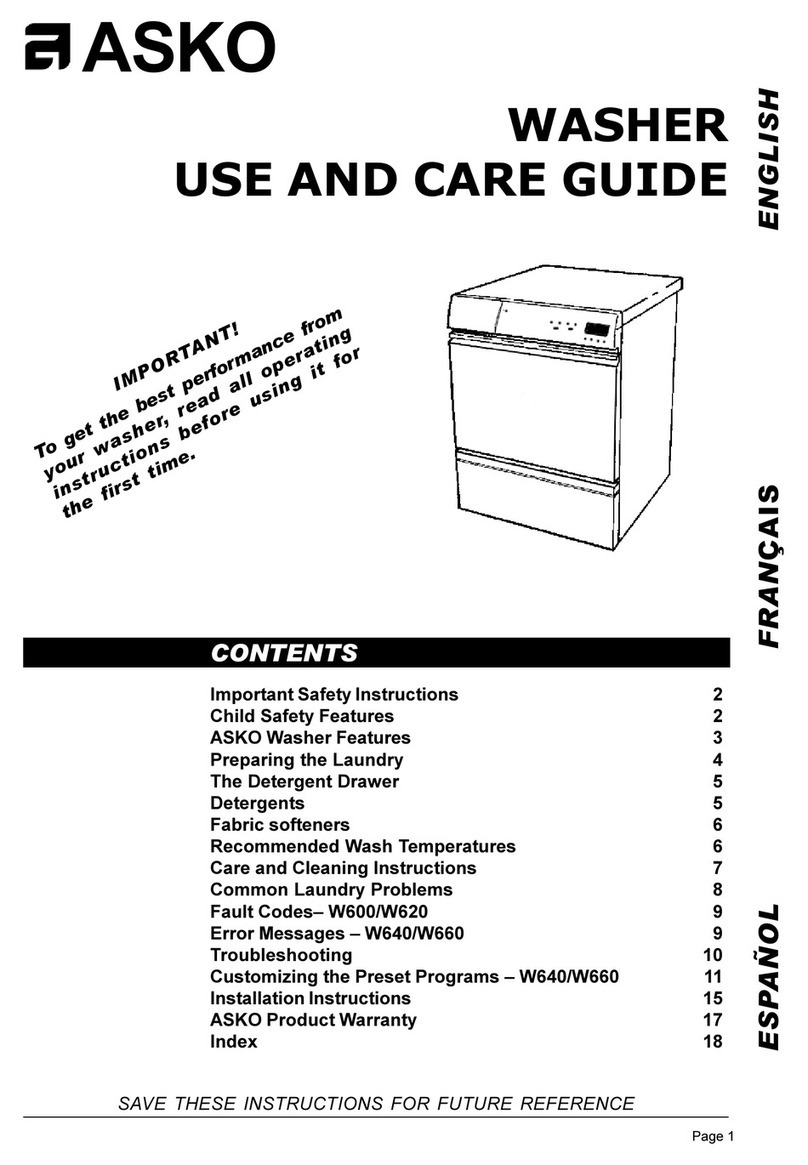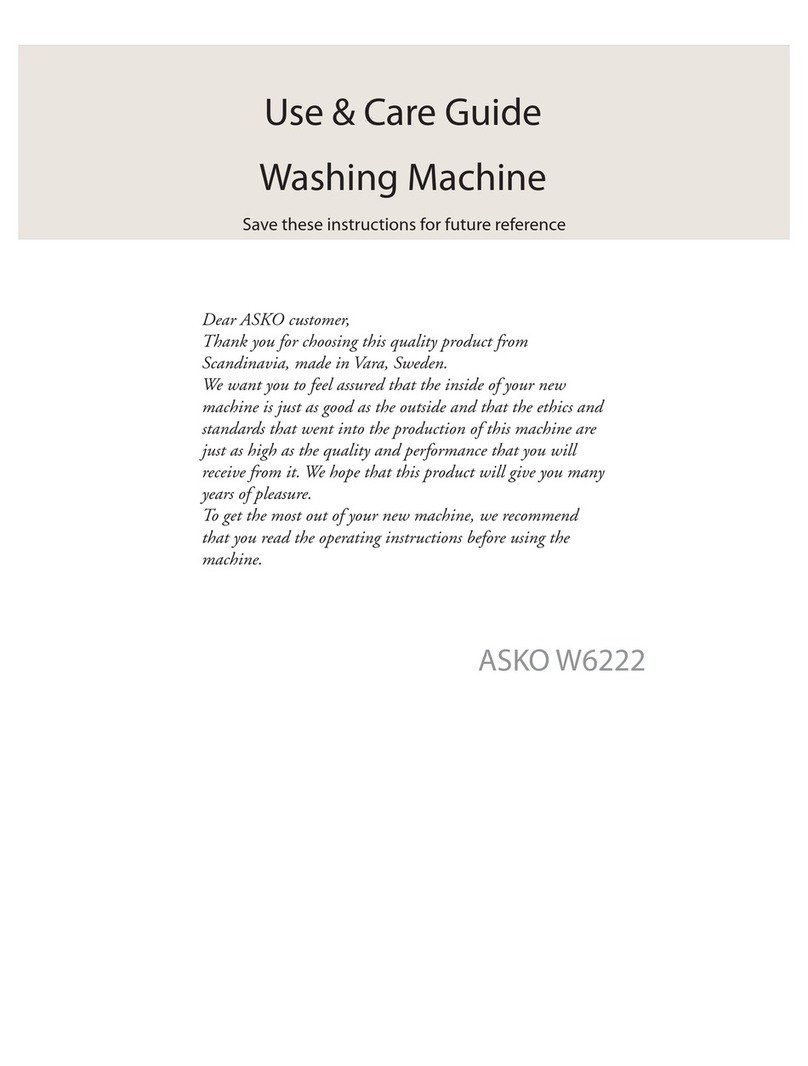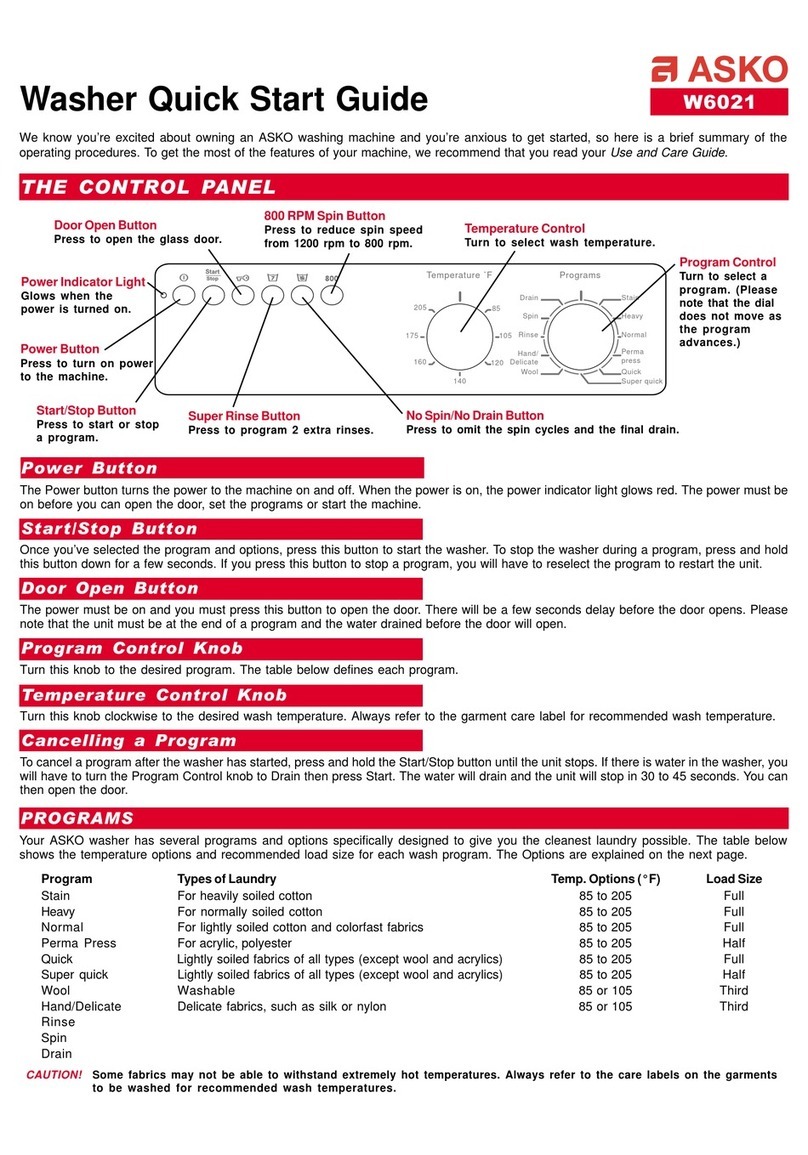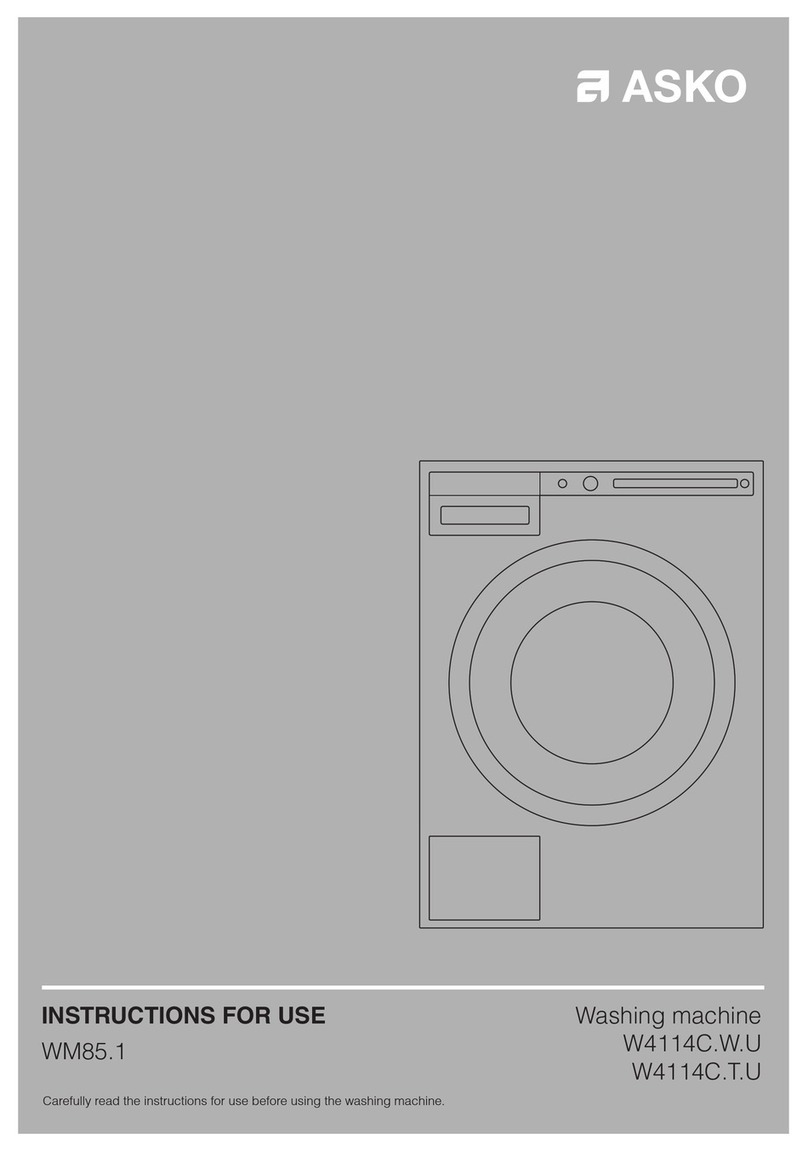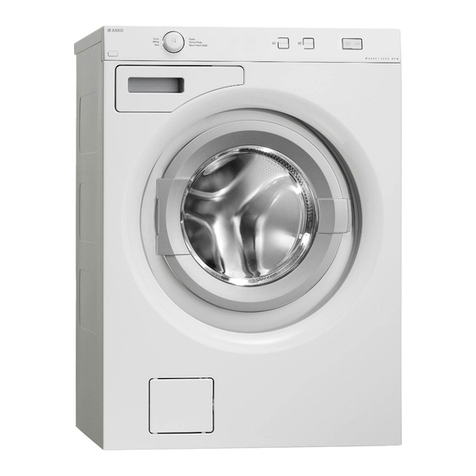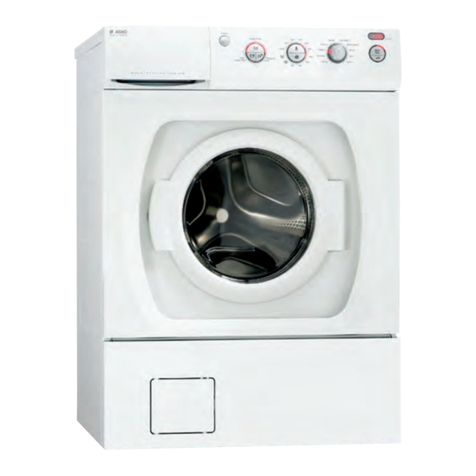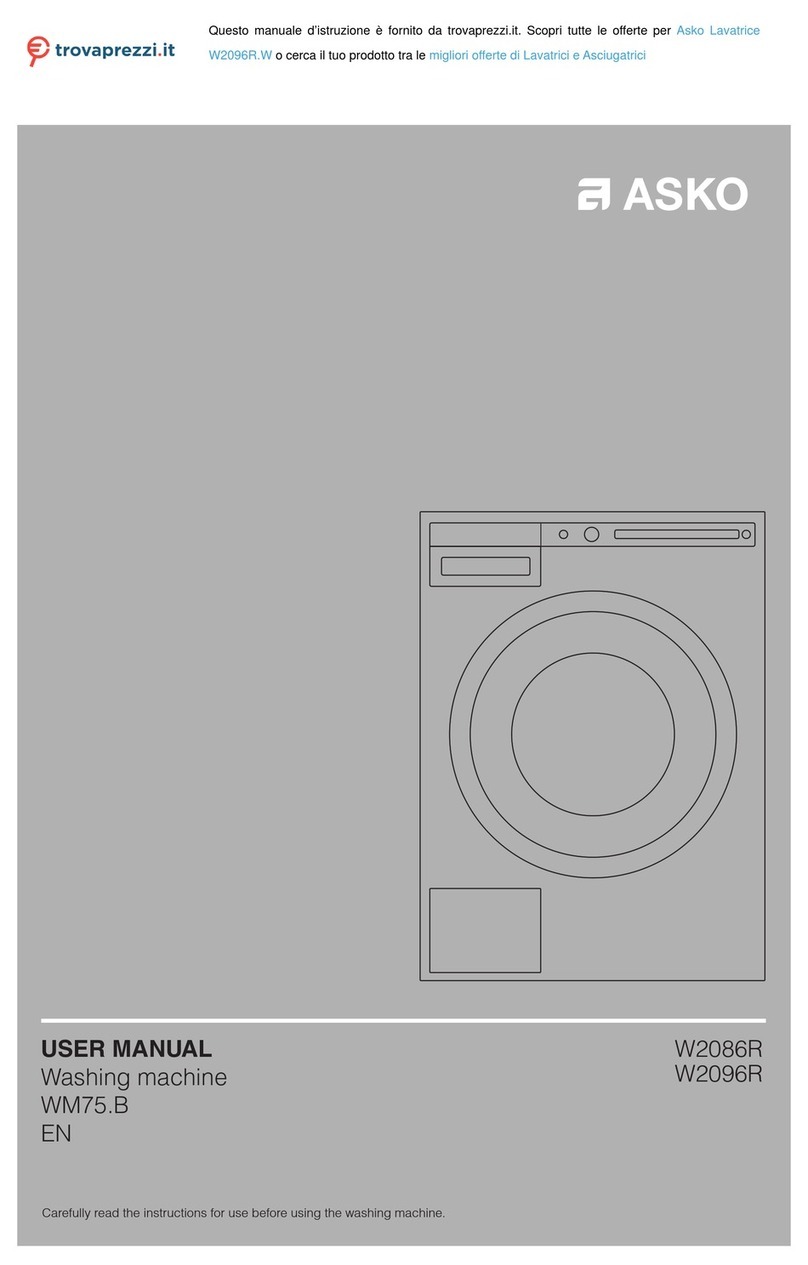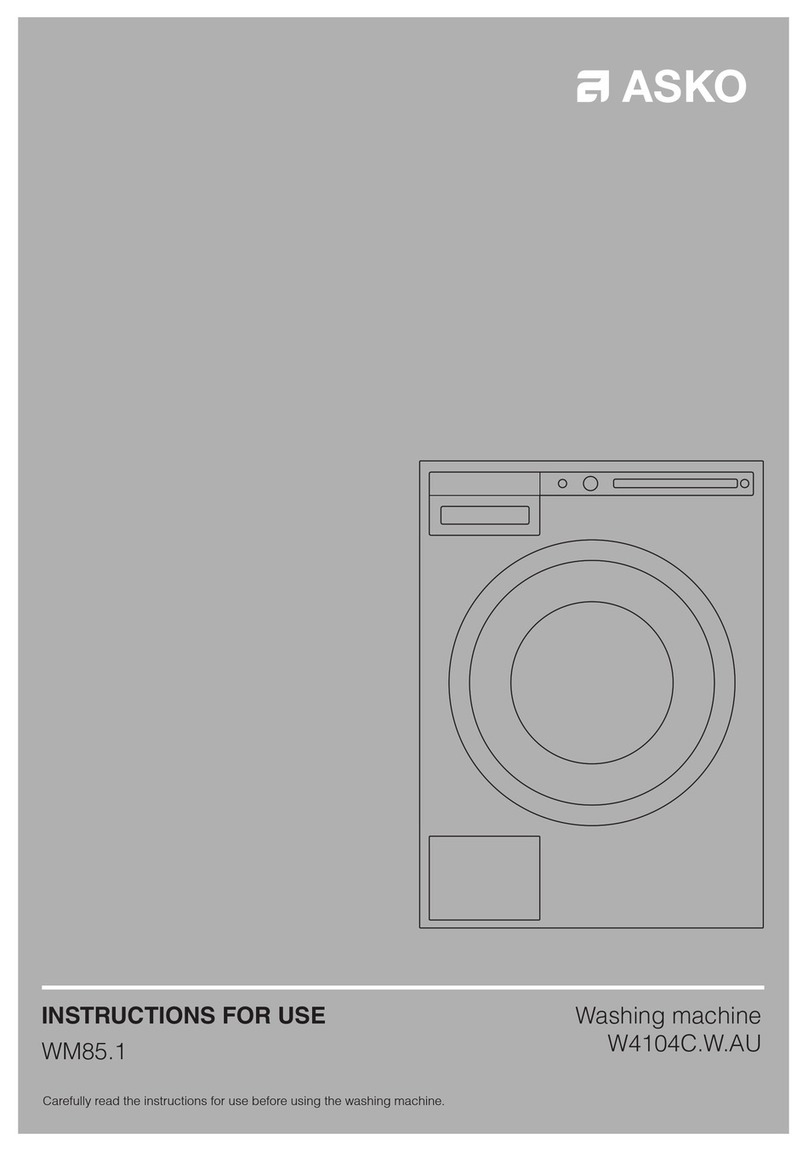4
Before using your machine for the rst time
Asthma and Allergy labelling
The washing machine you have purchased
is recommended by the Swedish Asthma
and Allergy Association (Astma- och
Allergiförbundet) and the Norwegian Asthma
and Allergy Association (Norges Astma- og
Allergiforbund), which means that we oer
allergy suerers unique possibilities. In order
to optimise the results, you must participate
actively in its use. Below we oer some simple
advice that will become a natural part of your
use of our product, providing good opportunities
for minimising the potential eects of handling
washing.
• Choose a detergent recommended by the
Swedish Asthma and Allergy Association
and the Norwegian Asthma and Allergy
Association. Also remember to use dierent
detergents for dierent types of washing.
You can read more about detergents in the
”Advice and tips before washing” chapter.
• In order to minimise the amount of excess
detergent left in clean washing, you must
use the right dose. To do this, you need
to know the water hardness in your area.
We recommend that you nd out the local
water hardness and make a note of it in
the detergent recommendations in chapter
”Advice and tips before washing”, so that you
can always easily check how much detergent
to use. You can read more about water
hardness later in this chapter.
• In order to wash at the right temperature and
to use the right detergent, it is important that
you correctly sort your washing. You can
read more about this in the ”Advice and tips
before washing” chapter.
• This machine has two wash programmes
specially adapted to the recommendations of
the Swedish Asthma and Allergy Association
and the Norwegian Asthma and Allergy
Association – Allergy Cotton and Allergy
Synthetic. These programmes dier from the
other programmes in terms of recommended
load, water consumption, and energy
consumption.
• To further improve rinse performance, you
can select the Super Rinse option. This
option increases the number of rinses;
however, the number of rinses varies
depending on the programme selected.
• It is important to clean the detergent
compartment regularly. How often depends
on how much detergent and which type of
detergent you use. You can read more about
cleaning the detergent compartment in
chapter ”Care and cleaning”.
• In order to keep the machine in good
condition, and to prevent a build-up of
excess detergent and other residue in the
machine, it is important to clean the machine
regularly. This washing machine has a
unique programme for cleaning the inside
of the machine. We recommend running the
Cleaning programme when the machine is
new and then once a month or as often as
you feel necessary.
